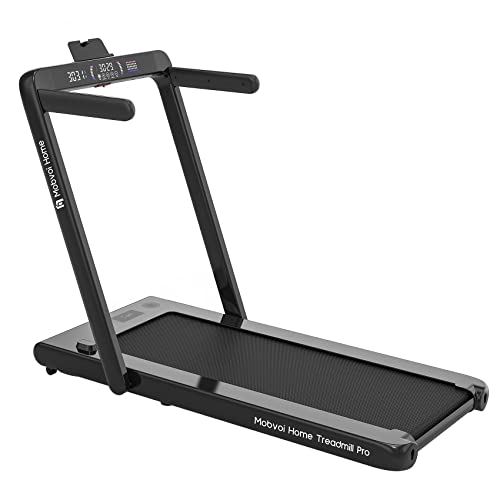Five Things You Don't Know About Treadmill
The Comprehensive Guide to Home Treadmills: Everything You Need to Know
With an increasing focus on physical fitness and health in today's fast-paced world, home treadmills have actually emerged as a popular option for those seeking to instill regular workout into their regimens. Whether for visual enhancement, convenience, or fitness tracking, treadmills use a flexible service for many physical fitness enthusiasts.
This article checks out different aspects of home treadmills, offering insights into their features, benefits, and important considerations for prospective buyers. It likewise attends to common questions and misconceptions about these exercise machines.
Tabulation
- What is a Home Treadmill?
- Advantages of Having a Home Treadmill
- Kinds Of Home Treadmills
- Key Features to Consider
- Maintenance Tips for Your Treadmill
- Frequently Asked Questions about Home Treadmills
- Conclusion
What is a Home Treadmill?
A home treadmill is a physical fitness device developed for running or walking while remaining in one location. Unlike traditional running outside, it allows individuals to exercise in the convenience of their homes. Treadmills can be powered by electrical power or can be manual, needing the user to move the belt with their own effort.
Advantages of Having a Home Treadmill
The advantages of owning a home treadmill are numerous. Below are some crucial advantages:
- Convenience: Users can exercise at any time, avoiding weather condition restraints or gym schedules.
- Time Management: Reduced travel time to and from a gym, permitting quicker exercises.
- Privacy: The comfort of exercising in a personal environment, suitable for those who feel uneasy in public settings.
- Versatility: Adjustable speeds and inclines offer differed workout choices, accommodating different physical fitness levels.
- Combination with Technology: Many modern-day treadmills come equipped with fitness apps and tracking systems that monitor progress.
Types of Home Treadmills
Home treadmills can be categorized into a number of types, each serving various requirements and choices:
Type
Description
Motorized Treadmills
Electric motors that allow users to change speed and incline with push-button controls.
Manual Treadmills
Requires physical effort to move the belt, typically more compact and portable.
Folding Treadmills
Space-saving styles that can be folded up when not in use.
Treadmill Desks
Enable users to walk while working, integrating physical fitness into their daily jobs.
Picking the Right Treadmill
Think about these elements when choosing the proper kind of treadmill for individual use:
- Space Requirements: Ensure the treadmill fits comfortably in your designated workout location.
- Speak with Reviews: Look at user feedback and expert evaluations to comprehend efficiency and reliability.
- Spending plan: Set a clear spending plan, as costs can vary extensively.
- Usage Frequency: Assess how typically the treadmill will be utilized to figure out durability and features needed.
Key Features to Consider
When searching for a home treadmill, it's crucial to assess specific functions that enhance the exercise experience. Particular functions to prioritize consist of:
- Motor Power: Look for a motor with at least 2.0 CHP for trusted performance.
- Running Surface: A bigger running surface is preferable, particularly for those who wish to sprint or take longer strides.
- Slope Options: Adjustable slopes increase exercise intensity and assistance engage different muscle groups.
- Cushioning System: Good shock absorption can significantly lower the impact on joints and prevent injuries.
- Innovation Integration: Built-in heart rate displays, Bluetooth connectivity, and incorporated workout programs can enhance your physical fitness journey.
Upkeep Tips for Your Treadmill
A properly maintained treadmill can last for years. Regular maintenance is crucial to making sure optimum performance. Consider these upkeep tips:
- Keep It Clean: Wipe down the surface area frequently to eliminate dust and sweat.
- Lube the Belt: Apply silicone lube according to maker guidelines to minimize friction.
- Look for Wear and Tear: Regularly examine the belt and deck for signs of damage or excessive wear.
- Check the Motor: Clean dust from the motor area and ensure correct ventilation to prevent getting too hot.
- Follow User Manual: Always describe the user manual for particular maintenance instructions connected to the design.
FAQs about Home Treadmills
1. Are Cheap Treadmills for weight-loss?
Yes, home treadmills can be really effective for weight-loss if utilized consistently as part of a well balanced diet and physical fitness regimen.
2. Just how much space do I require for a treadmill?
While it varies by design, a common home treadmill will require a minimum of 6.5 feet in length and 3 feet in width.
3. Do I need special shoes to use a treadmill?
While unique shoes aren't necessary, investing in good quality running shoes can assist avoid injuries and improve comfort.
4. Can I watch television or listen to music while using a treadmill?
Absolutely! Many contemporary treadmills have functions that allow users to view TV or listen to music through built-in speakers or through Bluetooth connections.
5. The length of time should I use a treadmill every day?
For optimal health benefits, go for at least thirty minutes of moderate-intensity workout on the treadmill most days of the week.
Owning a home treadmill unlocks to hassle-free and flexible workouts ideal for individuals of all skill levels. Understanding the various types, important functions, and correct upkeep can assist guarantee that your investment stays efficient and pleasurable. As physical fitness becomes a concern for numerous, home treadmills provide an exceptional chance for personal health and health, making it easier than ever to incorporate exercise into every day life.
With the best resources and assistance, a home treadmill can end up being an indispensable part of one's fitness journey, helping people attain their goals in a sustainable manner.
